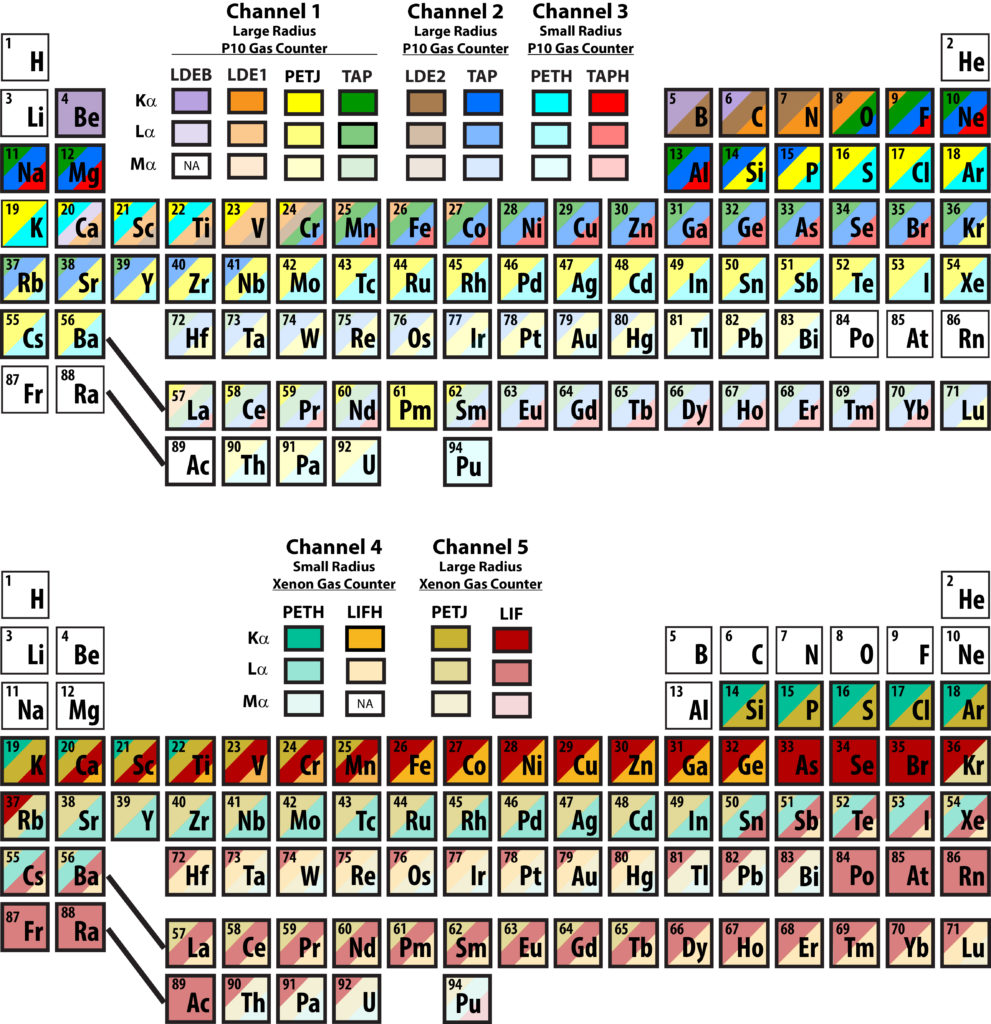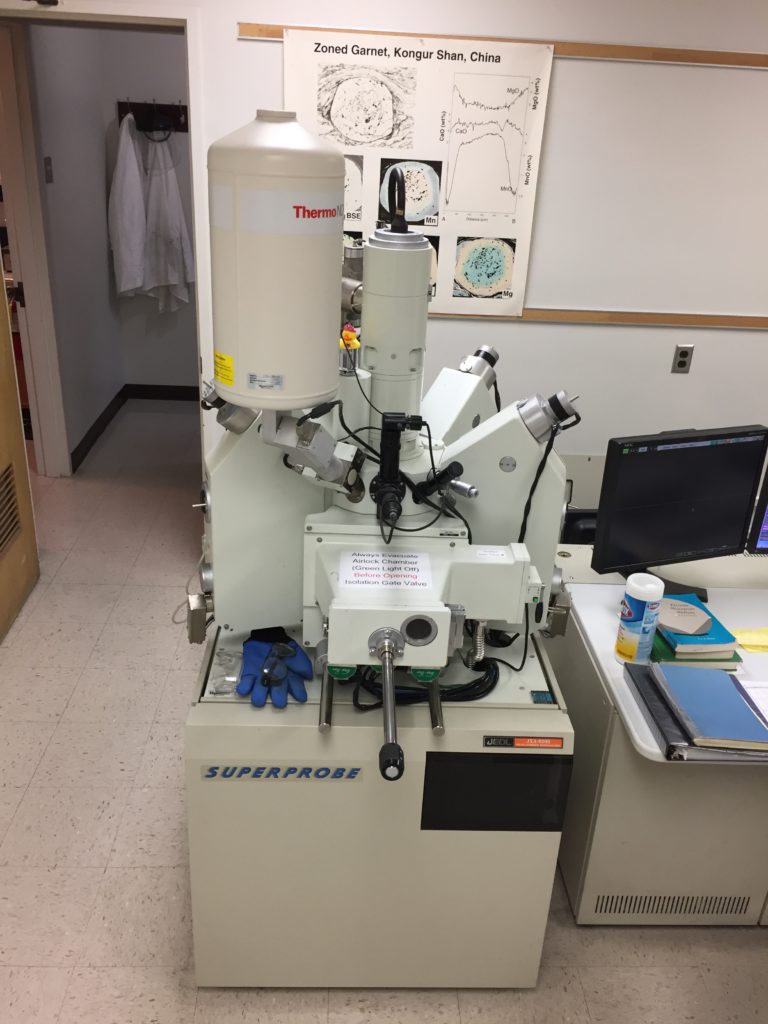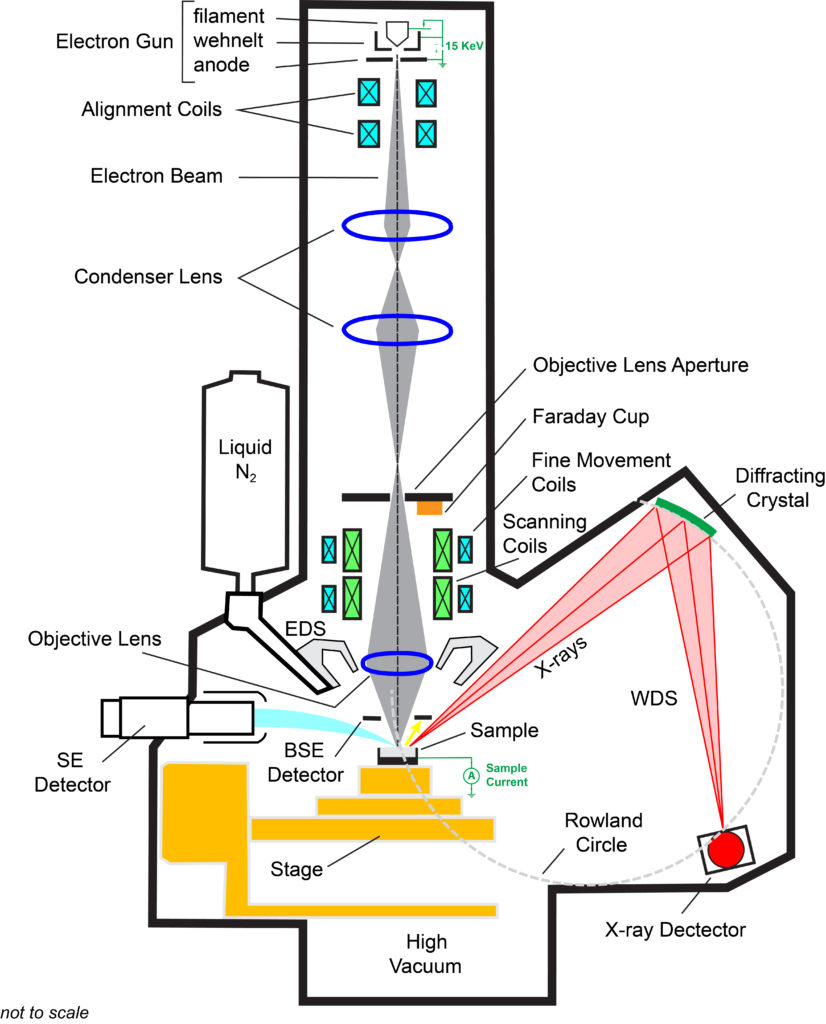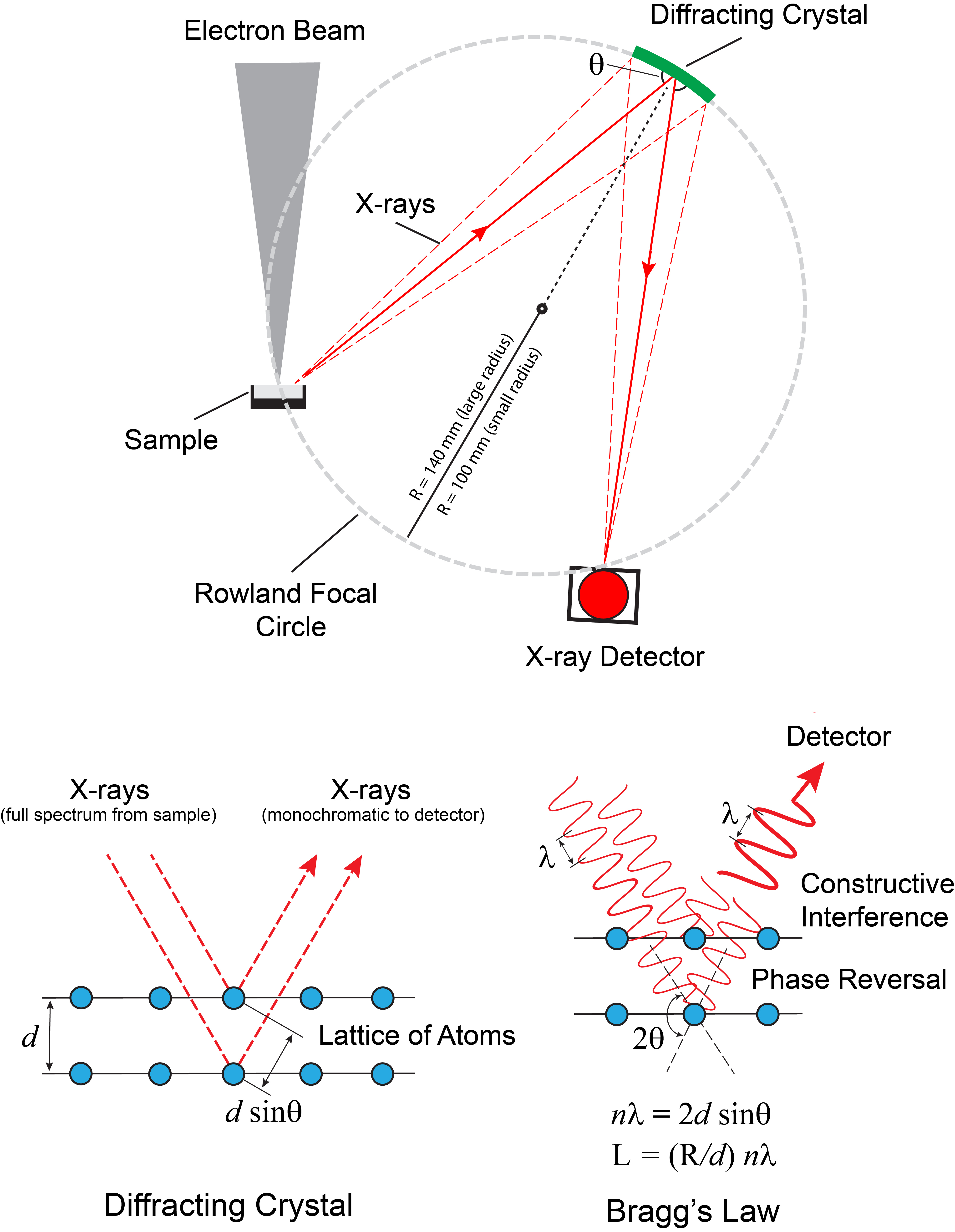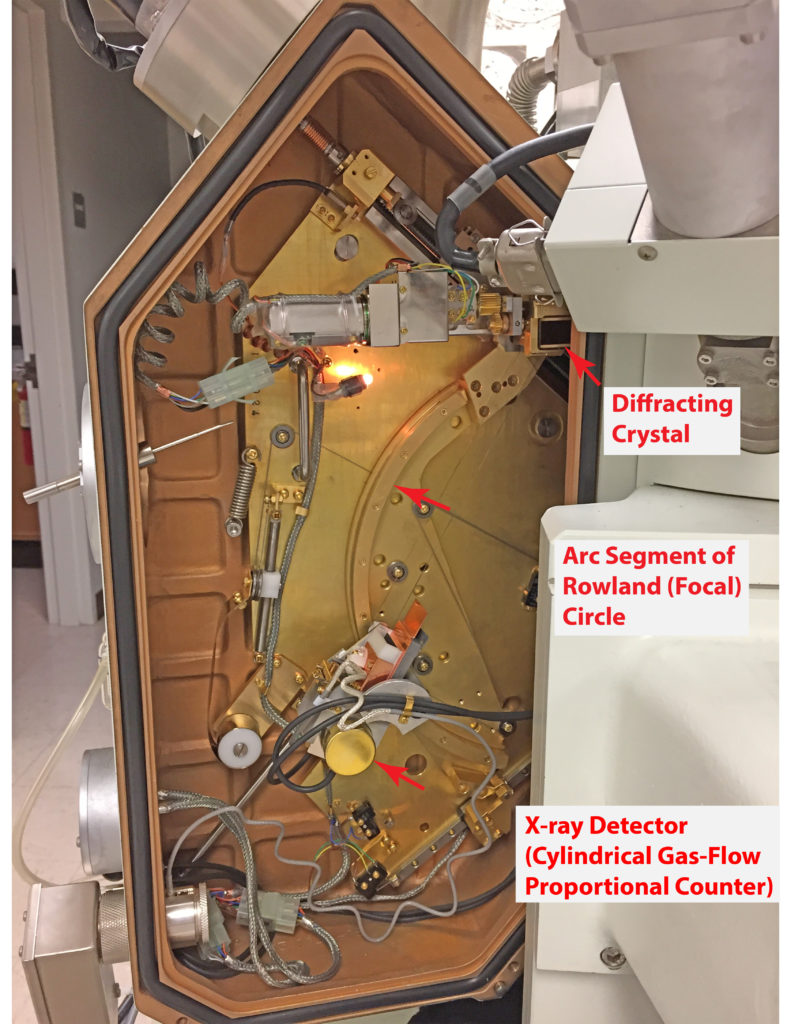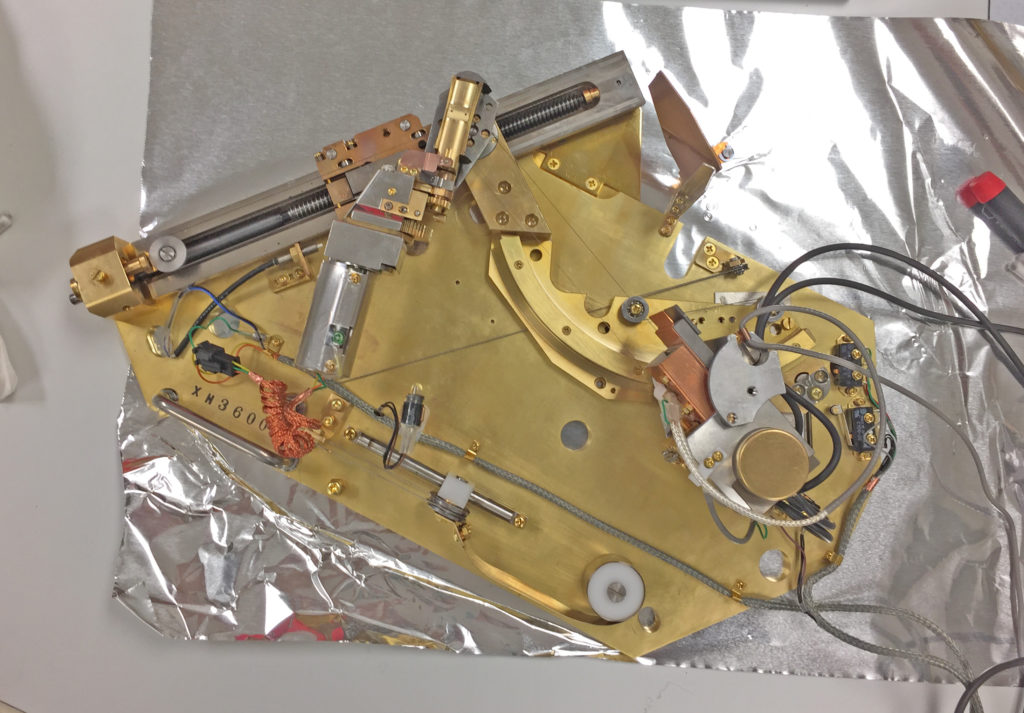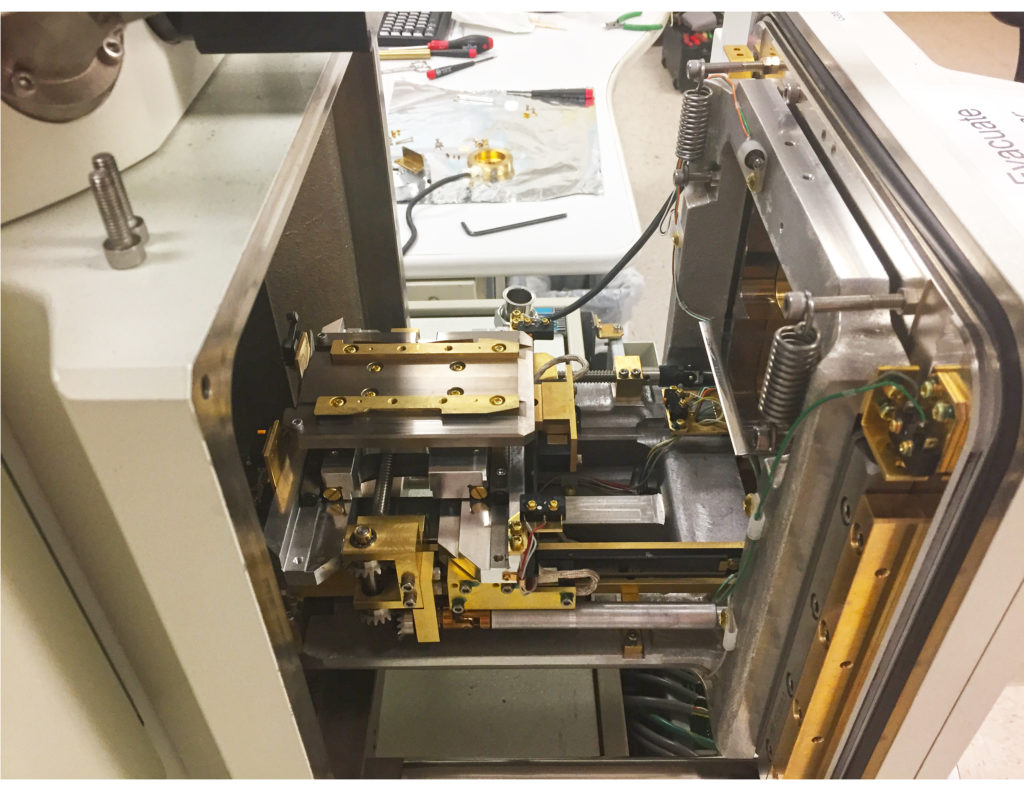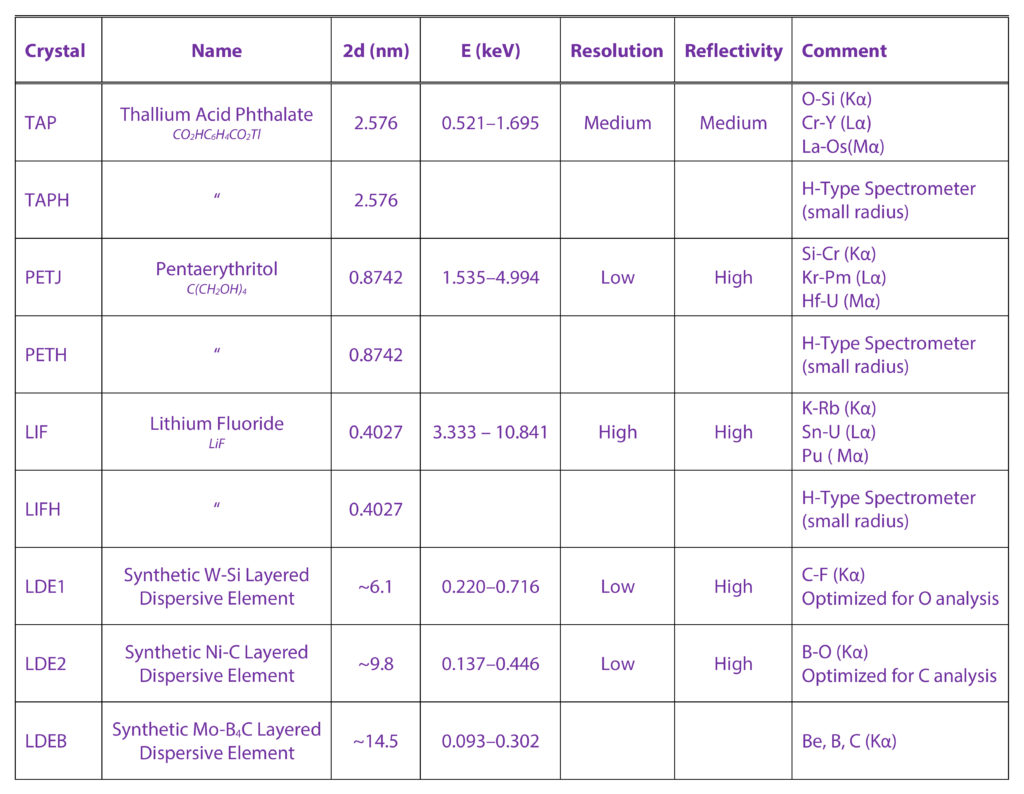JEOL JXA-8200 Superprobe
The two primary components of a wavelength-dispersive spectrometer are the diffracting crystal—which discriminates X-rays based on wavelength—and the detector—which measures the intensity of the X-rays that interact with the crystal. UCLA’s Superprobe consists of five spectrometers (channels) and 12 crystals. Channel 1 has four crystals and the remaining channels have two each. Channels 1, 2 and 5 are configured with a large-radius Rowland (focal) circle (R = 140 mm), while Channels 3 and 4 use a small radius (R = 100 mm; H-Type). Channels 1-3 are equipped with P10 (90% Argon + 10% methane quenching agent) gas-flow proportional counters (detectors), while Channels 4 and 5 have Xenon-sealed proportional counters. The LDE crystal combined with a P10 counter is designed to detect very light elements (i.e., very low energy and very long wavelength); the TAP crystals with a P10 counter for light elements (low energy and long wavelength); and the PET and LIF crystals with either counter for heavy elements (high energy and short wavelength). In addition, the Superprobe is equipped to detect both backscattered electrons and secondary electrons.
Configuration of Electron Microprobe
Bragg’s Law for Diffraction
The diffracting crystal which is located along the Roland Focal Circle isolates a single X-ray wavelength when the conditions for Bragg’s Law are satisfied. For the JEOL superprobes, the characteristic X-ray (i.e., Kα1, Lα1, Mα1, Kβ1, etc.) for a given element is given by its L value.
Cut-a-Way View of Spectrometer 1
View of Stage Assembly w/o Sample Holder
Characteristics of Diffracting Crystals in UCLA’s Superprobe
Element Detection (Kα, Lα and Mα lines) for UCLA’s Crystal-Detector Configuration
